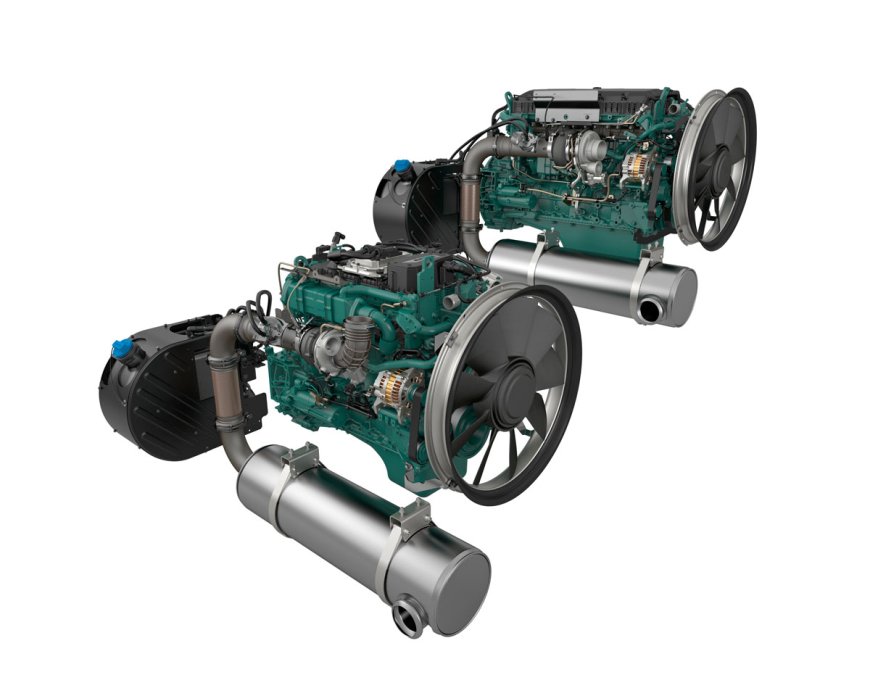Signs of recovery are visible due to the government’s stimulus package
What are the key drivers fuelling growth in sales of off-highway vehicle engines? 2020 will enter the history books as the year of the COVID-19. The industry has been interrupted around the globe. In India, a lockdown has slowed down

What are the key drivers fuelling growth in sales of off-highway vehicle engines?
2020 will enter the history books as the year of the COVID-19. The industry has been interrupted around the globe. In India, a lockdown has slowed down the business at the end of March 2020. Already now in July, signs of recovery are visible due to the government’s stimulus package. Increased demand is expected to return back to 2019 levels in the last quarter this year. Especially mining, construction and agricultural segments will drive the growth.
With OEMs pushing to extend the deadline of implementing next stage of emission norms to next year, what is its impact on the engine sector?
For the engine sector, the delayed implementation of new emission regulations does not play a big role. Only the official launch of certified engines is delayed. Engines and aftertreatment systems are already in the field in India for equipment trials. OEMs gain important testing time for their machines in the field, which was not possible during the lockdown times.
Increasing stringency of emission norms have led to several technological advancements in off-highway industry? Could you highlight these innovations along with its benefits?
With the stringent emission regulations, all engine suppliers will move to electronic engines with an aftertreatment system. Volvo Penta has already in 2006 introduced electronically controlled engines in India, independent of stricter emission regulations. Besides a cleaner environment, owners and operators benefit from a lower total cost of ownership.
Volvo Penta has been one of the pioneers of electronic engine control and all our engines are already today as a standard electronically controlled. Many features and benefits for end users and operators are only possible with an electronic engine control. Also important are the increased reliability and stable operations over the lifetime of the engine. Volvo Penta’s proven success in these aspects is underlined by the increased number of customers in various applications. OEMs participate in the digitalization process with BS (CEV/TREM) IV engines and increase reliability & efficiency for the operator, as well as launch new features and benefits due to the electronic architecture.
Looking forward to the upcoming BS (CEV/TREM) IV regulations, Volvo Penta’s strategy is to keep the changes as simple and minimal as possible for Indian OEMs. Volvo Penta’s proven Selective Catalytic Reduction (SCR) technology complies with BS (CEV/TREM) IV emission regulations without using a separate diesel particulate filter (DPF) or diesel oxidation catalyst (DOC). The SCR system is based on high-efficiency combustion, which reduces the fuel consumption and results in extremely low levels of particulate matter (PM). Nitrogen oxides (NOx) will be minimized in the SCR catalyst. The ingenuity of the system is revealed: the exhaust NOx is converted into harmless nitrogen gas and water vapour.
The SCR system automatically injects diesel exhaust fluid/urea to the exhaust gases. The gases are then passed through a catalytic converter before it is emitted to the environment. The extremely low levels of particulate matter in the emissions also make exhaust gas filtration (DPF) unnecessary. For original equipment manufacturers (OEMs), this means no re-generation, easy installation, continuous optimized fuel consumption and low operating costs.
What are the initiatives taken to upgrade engines and keep abreast with the latest technology in the world?
With the introduction of BS (CEV/Trem) IV, all engine manufacturers are required to introduce after-treatment systems for engines between 129kW to 560kW. This, in turn, will put enormous demands on OEMs, forcing them to re-design their machines to install new engines and after-treatment systems.Volvo Penta’s strategy is to keep these changes as simple as possible for Indian OEMs. Volvo Penta’s proven Selective Catalytic Reduction (SCR) technology complies with BS (CEV/Trem) IV emission regulations without using a separate diesel particulate filter (DPF) or diesel oxidation catalyst (DOC) unlike other engine suppliers.
Are your engines future ready and emission compliant?
We already have products ready for new regulation applicable for off road applications, BS (CEV/TREM) IV. Volvo Penta will use its tried and tested Selective Catalytic Reduction (SCR) technology for Indian OEMs when the stringent BS (CEV/TREM) IV emission regulations come into effect in October 2020 which is now deferred to April 2021. We have been supplying BS (CEV/TREM) IV equivalent Stage IV/Tier4 Final engines globally since 2013. The BS (CEV/TREM) IV compliant proto type equipments are being tested by several Indian OEMs right now.
Volvo Penta has similar engine footprints for all emission standards. As a result, the OEMs already using Volvo Penta BS (CEV) III engines will have no trouble changing to a BS(CEV/Trem) IV model, as the SCR catalyst will simply just replace the current silencer. It will also allow for lesser regulated export markets to be served without need of engine room redesign, and can be considered futureproof for the inevitable BS (CEV/Trem) V regulations. Infact,OEMs working with Volvo Penta already today have their layout and engine room design ready for BS (CEV/Trem) V regulations.

– Miron Thoms
Vice President & Head of Volvo Penta India

Hits: 50










